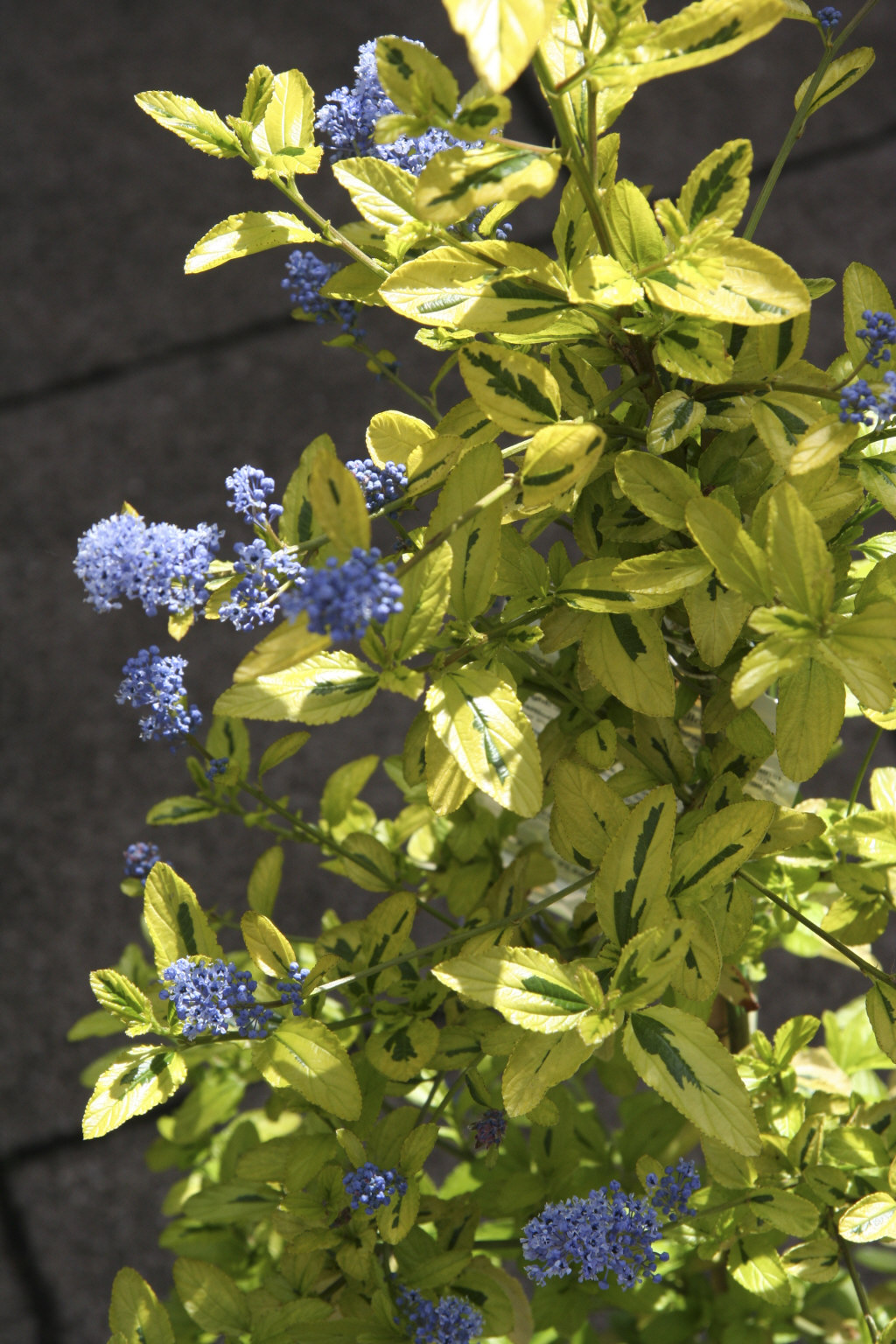Ceanothus 'Pershore Zanzibar'PBR (v)
Californian lilac 'Pershore Zanzibar'
Arching evergreen shrub about 1.5-2.5m tall and wide, with light greenish-yellow leaves blotched with dark green in the centre; light blue flowers open in late spring and early summer; flowering is not profuse, best grown for the foliage

Buy this plant
Size
Ultimate height
1.5–2.5 metresTime to ultimate height
2–5 yearsUltimate spread
1.5–2.5 metresGrowing conditions
Moisture
Well–drainedpH
Alkaline, Neutral, AcidColour & scent
| Stem | Flower | Foliage | Fruit | |
| Spring | Blue | Green Yellow | ||
|---|---|---|---|---|
| Summer | Blue | Green Yellow | ||
| Autumn | Green Yellow | |||
| Winter | Green Yellow |
Position
- Full sun
Aspect
South–facing or West–facing
Exposure
ShelteredDrought resistance
Yes Hardiness
H4Botanical details
- Family
- Rhamnaceae
- Native to GB / Ireland
- No
- Foliage
- Evergreen
- Habit
- Bushy
- Genus
Ceanothus can be evergreen or deciduous shrubs or small trees, with simple leaves and small blue, pink or white flowers in profuse axillary or terminal clusters. They are fast-growing but may be short-lived
- Name status
Accepted
How to grow
Cultivation
Grow in fertile, well-drained soil in full sun with shelter from strong, cold winds. Lime tolerant but may become chlorotic on shallow chalk soils. See ceanothus cultivation
Propagation
Propagate by semi-ripe cuttings in mid to late summer
Suggested planting locations and garden types
- City and courtyard gardens
- Coastal
- Cottage and informal garden
- Gravel garden
- Mediterranean climate plants
- Wildlife gardens
- Flower borders and beds
- Wall side borders
Pruning
Pruning group 8 after flowering or pruning group 13 for wall-training
Pests
May be susceptible to scale insects
Diseases
May be susceptible to honey fungus
Get involved
The Royal Horticultural Society is the UK’s leading gardening charity. We aim to enrich everyone’s life through plants, and make the UK a greener and more beautiful place.